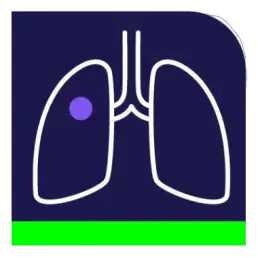Fleischner Criteria Calculator for Incidental Pulmonary Nodules
Reference:
Related Calculators:
More about the Fleischner Criteria Calculator for incidental pulmonary nodules:
The Fleischner Criteria provide a standardized approach for the management of incidentally detected pulmonary nodules on CT scans in adults aged 35 years and older. These guidelines are designed to assist clinicians in determining appropriate follow-up and management strategies based on nodule characteristics and patient risk factors.
Key Principles:
- Patient Population: Adults ≥35 years old with incidentally detected pulmonary nodules on CT imaging.
- Exclusions: The guidelines do not apply to patients with known malignancy, immunocompromised status, or those undergoing lung cancer screening.
- Nodule Assessment: Nodules are categorized based on size, consistency (solid, subsolid), and number (single, multiple).
- Risk Stratification: Patients are stratified into low-risk and high-risk categories based on factors such as smoking history and exposure to carcinogens.
Fleischner Management Recommendations:
Solid Nodules:
- <6 mm: No routine follow-up for low-risk patients; optional CT at 12 months for high-risk patients.
- 6–8 mm: CT at 6–12 months; consider CT at 18–24 months if stable.
- >8 mm: Consider CT at 3 months, PET/CT, or tissue sampling.
Subsolid Nodules:
- Pure Ground-Glass <6 mm: No routine follow-up.
- Pure Ground-Glass ≥6 mm: CT at 6–12 months to confirm persistence; if persistent, CT every 2 years until 5 years.
- Part-Solid <6 mm: No routine follow-up.
- Part-Solid ≥6 mm: CT at 3–6 months; if stable, annual CT for 5 years.
Multiple Nodules: Management is based on the most suspicious nodule, considering size, consistency, and patient risk factors.
Clinical Application:
By adhering to the Fleischner Society Guidelines, clinicians can make informed decisions regarding the management of incidental pulmonary nodules, balancing the risks of unnecessary interventions against the need for early detection of malignancy. These guidelines promote consistency in care and help reduce variability in clinical practice.
For detailed information and resources on the Fleischner Society Guidelines, please refer to the references listed above.



